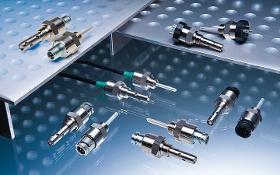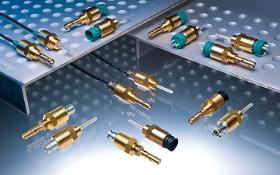- europages
- >
- COMPANIES - SUPPLIERS - SERVICE PROVIDERS
- >
- liquid oil
Results for
Liquid oil - Import export

LINDNER SPRÜHSYSTEME GMBH
Germany
main use: lotions, hair cosmetics, liquid soaps, edible oil, sauces etc
Request for a quote
OHMEX INDUSTRIELLE ELEKTROWÄRME GMBH
Germany
Electrical process flow heaters The “STR type electrical process flow heater comprise a large range for industrial application custom built to meet client specification. These heaters are supplied CE marked in acc. the latest CENELEC requirements or manufactured to the latest IEC standards. Typical electric process heaters applications include heating of liquids i.e. heat transfer oil or fuel oil, glycol reboilers and water heaters and heating of pressurized gases i.e. pressurized air, superheated water steam, nitrogen or other compositions of gases.
Request for a quote
BEDIA MOTORENTECHNIK GMBH & CO. KG
Germany
BEDIA level monitoring sensors are used to monitor the filling levels of liquids. The sensors detect when a filling level is exceeded or falls below a limit. Water-based liquids like coolants, AdBlue®, fresh water, waste water, bilge water and oil-based liquids like motor oils, hydraulic oils, fuels and brake fluids can be monitored. Since they contain no mechanical moving parts, their function will not be influenced by dirt particles or other influences. No electrical current is sent through the medium via an electrode with BEDIA sensors, an electrolysis of the medium is not possible. Operating Principle The function of the sensor is based on the capacitive principle. It detects the change in capacitance that occurs when an electrode surrounded by air is immersed into a liquid medium. This change in capacitance at the electrode of the sensor excites an oscillator. This signal is processed by a microcontroller-based evaluation circuit which activates or deactivates an output stage.
Request for a quote
BEDIA MOTORENTECHNIK GMBH & CO. KG
Germany
BEDIA level monitoring sensors are used to monitor the filling levels of liquids. The sensors react when a filling level is exceeded or falls below a limit. Aqueous mediums like coolants, AdBlue®, fresh water, waste water, bilge water and oil-based liquids like motor oils, hydraulic oils, fuels and brake fluids can be monitored. Since they contain no mechanical moving parts, their function will not be influenced by dirt particles or other influences. No electrical current is sent through the medium via an electrode with BEDIA sensors, an electrolysis of the medium is not possible. Operating Principle The function of the sensor is based on the capacitive principle. It detects the change in capacitance that arises when an electrode surrounded by air is immersed into a liquid medium. This change in capacitance at the electrode of the sensor excites an oscillator, causing it to oscillate. Then this signal is processed by a microprocessor-based evaluation circuit.
Request for a quote
BEDIA MOTORENTECHNIK GMBH & CO. KG
Germany
BEDIA level monitoring sensors are used to monitor the filling levels of liquids. The sensors detect when a filling level is exceeded or falls below a limit. Water-based liquids like coolants, AdBlue®, fresh water, waste water and oil-based liquids like motor oils, hydraulic oils, fuels and brake fluids can be monitored. Operating Principle The function of the sensor is based on the capacitive principle. It detects the change in capacitance that occurs when an electrode surrounded by air is immersed into a liquid medium. This change in capacitance at the electrode of the sensor excites an oscillator. This signal is processed by a microcontroller-based evaluation circuit which activates or deactivates an output stage. Types of Media The level monitoring sensors are designed for two different media types: For electrically conductive liquid media with relative permittivity within a range of εr 35 … 85 (water, coolant, water/glycol mixture) For electrically non-conductive liquid media
Request for a quoteDo you sell or make similar products?
Sign up to europages and have your products listed

W. ULRICH GMBH
Germany
is obtained from the seeds of Simmondsia chinensis. Its seeds contain 50% oil. Chemically speaking jojoba oil is a liquid wax. Characteristic properties: * Jojoba oil is a mixture of wax esters * High content of eicosenoic, cetoleic and oleic acid * rich in natural vitamin E Cultivation: The germinaton capacity of jojoba oil takes half a year to reach 99%. After 11 years still 38% under open storage. It grows best in alkaline sand at temperatures between 27°C and 38°C. Growing cuttings has its benefits: The quantity of female and male exemplars can be precisely determined; rooting takes about 38 days.
Request for a quoteResults for
Liquid oil - Import exportNumber of results
7 ProductsCountries
Company type